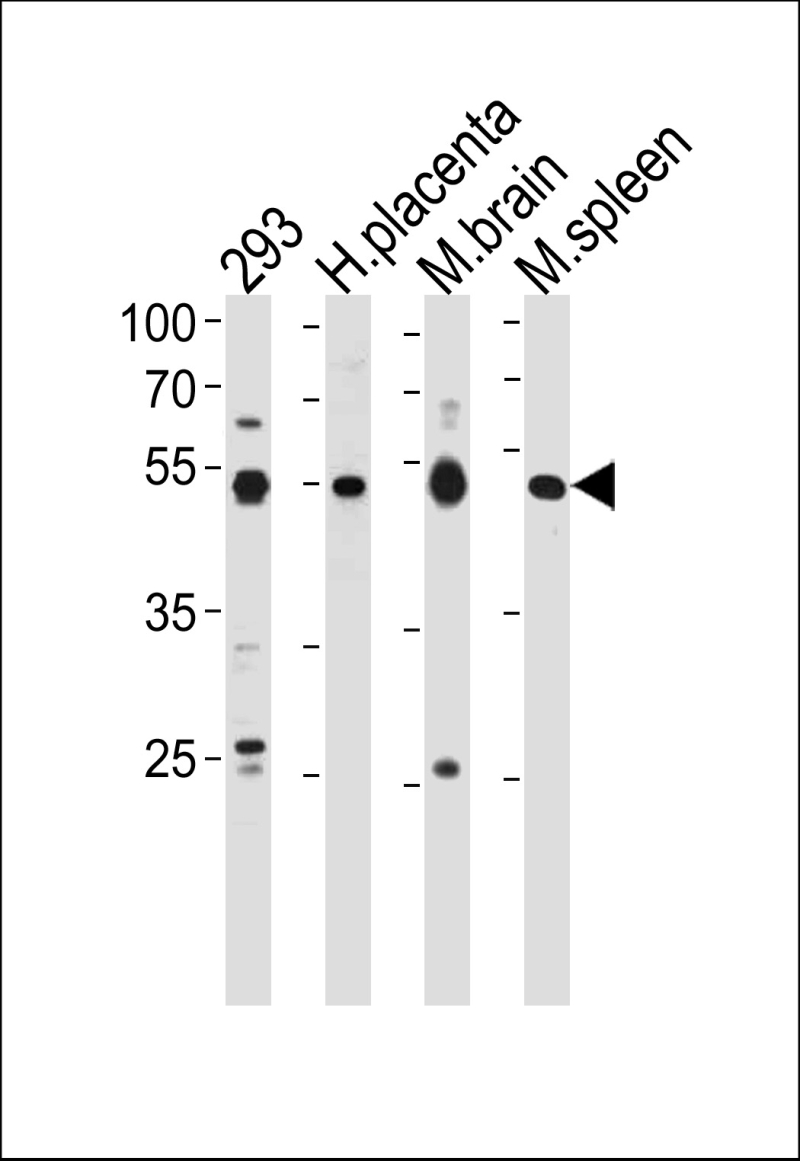
| WB | 1/1000 | Human,Mouse,Rat |
| IF | 咨询技术 | Human,Mouse,Rat |
| IHC | 咨询技术 | Human,Mouse,Rat |
| ICC | 技术咨询 | Human,Mouse,Rat |
| FCM | 咨询技术 | Human,Mouse,Rat |
| Elisa | 咨询技术 | Human,Mouse,Rat |
| Aliases | Histone H4 transcription factor, Histone nuclear factor P, HiNF-P, MBD2-interacting zinc finger protein, Methyl-CpG-binding protein 2-interacting zinc finger protein, HINFP, MIZF, ZNF743 |
| Entrez GeneID | 25988 |
| WB Predicted band size | 59.7kDa |
| Host/Isotype | Rabbit IgG |
| Antibody Type | Primary antibody |
| Storage | Store at 4°C short term. Aliquot and store at -20°C long term. Avoid freeze/thaw cycles. |
| Species Reactivity | Human, Mouse |
| Immunogen | This HINFP antibody is generated from rabbits immunized with a KLH conjugated synthetic peptide between 317-346 amino acids from the Central region of human HINFP. |
| Formulation | Purified antibody in PBS with 0.05% sodium azide. |
+ +
The HINFP (Histone Nuclear Factor P) antibody is a valuable tool for studying the role of the HINFP protein, a conserved transcription factor encoded by the HINFP gene. HINFP is critical for regulating histone H4 gene expression, particularly during the cell cycle. It binds to the promoter regions of histone H4 genes, enabling cell cycle-dependent transcriptional activation, which is essential for chromatin assembly and DNA replication. HINFP also interacts with the MuvB complex and other regulatory proteins, influencing processes like DNA damage response, genome stability, and cellular differentiation. Dysregulation of HINFP has been linked to diseases, including cancer and neurodegenerative disorders.
HINFP antibodies are widely used in molecular biology research to detect and quantify HINFP expression via techniques such as Western blotting, immunofluorescence, and chromatin immunoprecipitation (ChIP). These antibodies help elucidate HINFP's nuclear localization, its dynamic interactions during cell cycle progression, and its role in maintaining epigenetic regulation. Monoclonal and polyclonal HINFP antibodies are commercially available, often validated for specificity using knockout cell lines or siRNA-mediated knockdown. Researchers employ these tools to explore HINFP's involvement in developmental biology, oncogenesis, and therapeutic resistance, making it a focal point in studies targeting chromatin dynamics and transcriptional control mechanisms.
×